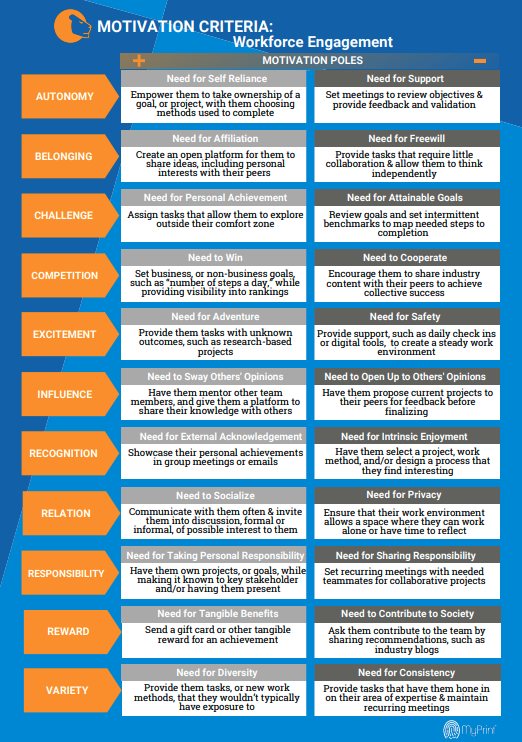Preventing Employee Burnout

When was the last time you were recognized for your hard work, whether it was from supporting another team, leading a meeting, doing a presentation, or even just getting through a large workload? Chances are this is something common to receive praise for, both from your colleagues as well as your friends or family. Now think of the last time that you received similar praise for taking a bubble bath, meditating, or going for a walk. You most likely haven’t received as much as a pat on the back for partaking in any of these activities.
Obviously those are two completely different and unrelated things, right? Well, kind of. However if you are receiving praise for doing something, you are likely to continue doing that thing, right? So if we are constantly being praised for working hard, but rarely for self-care, then what happens? That, my friends, is the topic of the day: Burnout.
What is burnout?
So what is burnout anyways? Essentially, burnout is overworking yourself to the point of physical, mental or emotional distress². Everyone has a different threshold for how much they can work before experiencing burnout, but a huge factor in this is how you feel about the work you are doing. When you are satisfied with your work — when you are engaged and motivated — you are less susceptible to the stressors that can bring not only mental or emotional, but also physical distress to your body³.
What causes burnout?
There are multiple factors that can lead to employee burnout, but one of the main things is the lack of satisfaction that one has with their work¹. Some people are lucky enough to have found work that brings them great joy, and even these individuals are able to experience burnout.
When work stressors build up over time, they will eventually boil over and lead to burnout. This can result from having an unclear idea of what you are supposed to be doing in your role, taking on too many responsibilities, lack of recognition, working long hours, or not carving out time to take care of yourself. These are just a few of the factors that can lead to employee burnout, especially if no preventative measures are being taken.
Why is this something I should be concerned about?
As we have mentioned before, burnout can have an impact on your mental, emotional, and physical wellbeing³. Mentally, burnout can make it hard for someone to focus, and they will often be distracted and have difficulties getting their thoughts together. Emotionally, it can lead to irritability and detachment from others. Physically, burnout can lead to multiple issues such as headaches, sleep disorders, and even cardiovascular disease.
Preventing burnout
The first step to preventing burnout, is learning more about yourself and your employees. Understand what it is that motivates you and your team, and make sure that those motivations are being fulfilled. Research shows that individuals who are motivated and engaged in their work are less likely to experience burnout¹.
Rather than guessing based on gut feelings, or trying to motivate an entire workforce in the same way, you can assess your team to discover the unique ways to motivate and engage them. Leveraging tools such as MyPrint® can help you assess your team and help you motivate and engage your workforce in a more effective manner. Click here to read our blog post from earlier this year on step by step instructions on how to engage your remote workforce using MyPrint®, and see the chart below for more ways to motivate your team!

Even if you are the most motivated, satisfied, engaged individual, that’s still not enough to fully prevent potential burnout. Finding work-life balance is just as important! Here are some tips to set you up for success:
- Set boundaries: Set a time to consistently end your work day, and try to stick to it as much as you can. Restrict checking emails in the evenings, or turn off the alerts so you are less tempted.
- Time blocking: Set aside time on your calendar to ensure you get your work done if you find yourself constantly in meetings. Schedule short breaks if you are not someone who naturally takes breaks throughout the day.
- Have a designated work space: If you are working remotely, or often find yourself working at home, have a designated space for work (if possible) that is separate from where you like to relax and spend your personal time.
- Take breaks: Take time during the day for a mental break. This can include taking a coffee break, going for a walk, closing your eyes for a minute, or doing anything that is not work related.
- Find what makes you happy outside of work: Find a hobby that brings you happiness, spend time with your loved ones, get exercise or spend time in nature — find something that will increase your life satisfaction outside of work.
To sum it up…
If you have been feeling a little overworked or stressed out, use this as your sign to take care of yourself! Take a break. Meditate. Go for a walk. Take a minute to stretch or do yoga. Read a book. Cook a nice meal. Learn a new instrument. Do something for yourself to help find that perfect balance between work and play!
If you’re interested in using MyPrint® to motivate and engage your workforce, please visit www.talentoday.com or contact our experts at contact@talentobe.com
Sources
¹ Duffy, Dik, Douglass, England, & Velez (2018). Work as a calling: A theoretical model. Journal of Counseling Psychology, 65(4), 423–439.
² Maslach, C. (2003). Job Burnout: New Directions in Research and Intervention. Current Directions in Psychological Science, 12(5), 189–192.
³ Smith Bailey, D. (2006). Burnout harms workers’ physical health through many pathways. Monitor on Psychology, 12(5), 11.


